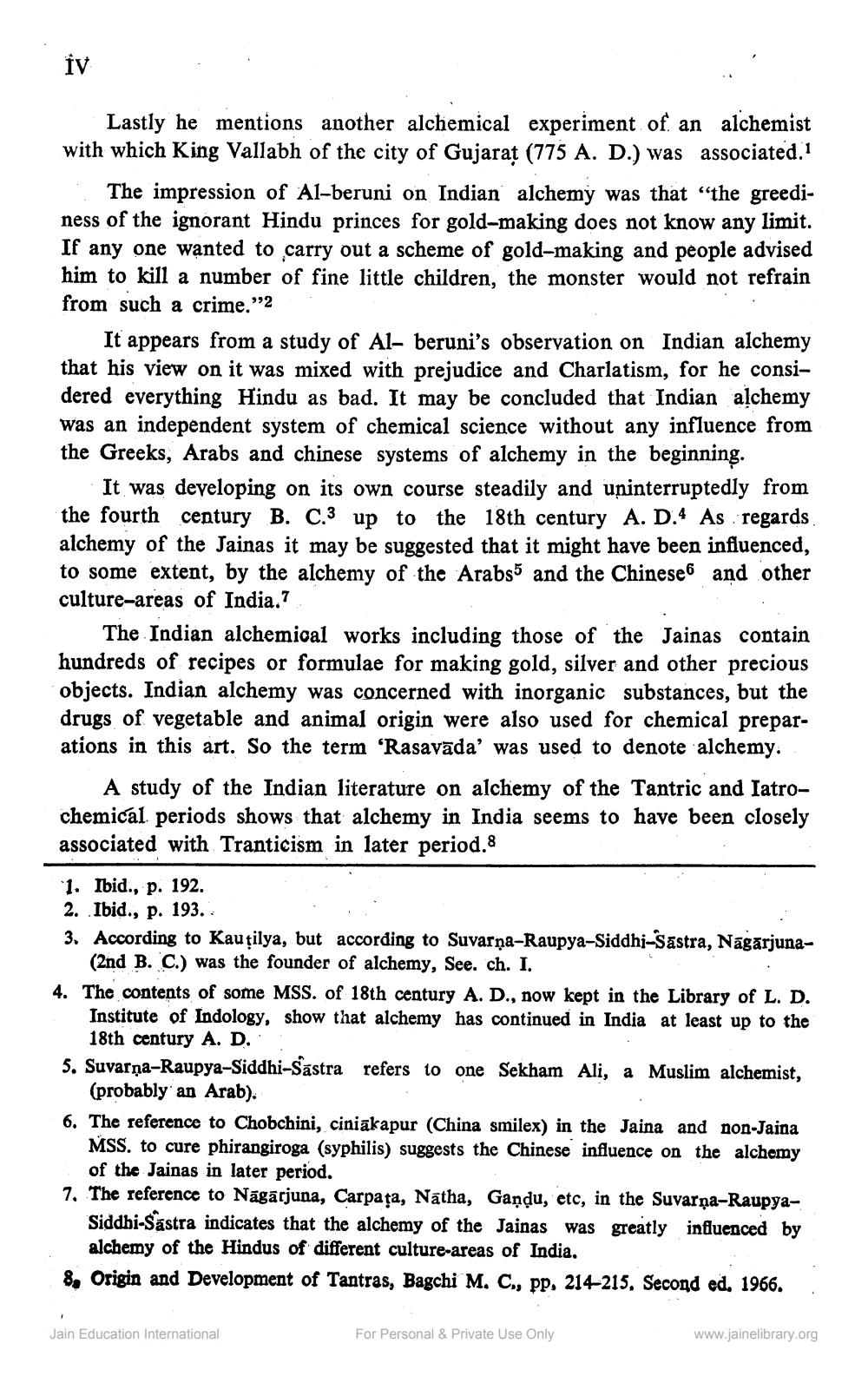Book Title: Suvarna Raupya Siddhi Shastra Author(s): J C Sikdar Publisher: L D Indology Ahmedabad View full book textPage 9
________________ IV Lastly he mentions another alchemical experiment of an alchemist with which King Vallabh of the city of Gujarat (775 A. D.) was associated." The impression of Al-beruni on Indian alchemy was that “the greediness of the ignorant Hindu princes for gold-making does not know any limit. If any one wanted to carry out a scheme of gold-making and people advised him to kill a number of fine little children, the monster would not refrain from such a crime."2 It appears from a study of Al- beruni's observation on Indian alchemy that his view on it was mixed with prejudice and Charlatism, for he considered everything Hindu as bad. It may be concluded that Indian alchemy was an independent system of chemical science without any influence from the Greeks, Arabs and chinese systems of alchemy in the beginning. It was developing on its own course steadily and uninterruptedly from the fourth century B. C.3 up to the 18th century A. D.4 As regards alchemy of the Jainas it may be suggested that it might have been influenced, to some extent, by the alchemy of the Arabs5 and the Chinese and other culture-areas of India.? The Indian alchemical works including those of the Jainas contain hundreds of recipes or formulae for making gold, silver and other precious objects. Indian alchemy was concerned with inorganic substances, but the drugs of vegetable and animal origin were also used for chemical preparations in this art. So the term 'Rasavāda' was used to denote alchemy. A study of the Indian literature on alchemy of the Tantric and Iatrochemical periods shows that alchemy in India seems to have been closely associated with Tranticism in later period.8 1. Ibid., p. 192. 2. Ibid., p. 193. 3. According to Kautilya, but according to Suvarna-Raupya-Siddhi , Nagarjuna (2nd B. C.) was the founder of alchemy, See. ch. I. 4. The contents of some MSS. of 18th century A. D., now kept in the Library of L. D. Institute of Indology, show that alchemy has continued in India at least up to the 18th century A. D. 5. Suvarņa-Raupya-Siddhi-Sastra refers to one Sekham Ali, a Muslim alchemist, (probably an Arab). 6. The reference to Chobchini, ciniakapur (China smilex) in the Jaina and non-Jaina MSS. to cure phirangiroga (syphilis) suggests the Chinese influence on the alchemy of the Jainas in later period. 7. The reference to Nāgārjuna, Carpata, Nātha, Gandu, etc, in the Suvarņa-Raupya Siddhi-Sastra indicates that the alchemy of the Jainas was greatly influenced by alchemy of the Hindus of different culture-areas of India. 8, Origin and Development of Tantras, Bagchi M. C., pp. 214–215, Second ed. 1966. Jain Education International For Personal & Private Use Only www.jainelibrary.orgPage Navigation
1 ... 7 8 9 10 11 12 13 14 15 16 17 18 19 20 21 22 23 24 25 26 27 28 29 30 31 32 33 34 35 36 37 38 39 40 41 42 43 44 45 46 47 48 49 50 51 52 53 54 55 56 57 58 59 60 61 62 63 64 65 66 67 68 69 70 71 72 73 74 75 76 77 78 79 80 81 82 83 84 85 86 87 88 89 90 91 92 ... 434
